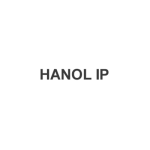As of December 2019, designs of trendy fashion items can be registered within 10 days in Korea.
General practice for design examination
Korea has a unique examination system for design applications. It is a combination of the substantive examination system (SES) and the partial examination system (PES).
In general, substantive examination is carried out to examine whether design applications comply with the substantive requirements such as novelty and the first-to-file rule as well as formality requirements. Design applications are automatically examined in order of filing date, and a request for examination is not required for the initiation of substantive examination. Under the SES, it generally takes about one year or so from filing to obtain a design registration.
For some items which are sensitive to fashion trends and have short life-spans, the PES applies to provide a faster design registration. Before December 2019, when there were no grounds for refusal, it took about two months from filing to registration under the PES. However, now, this period has been significantly shortened so that examination results can be received within 10 days.
Eligible design items under the PES
The PES is currently applied only to certain specific items which belong to Locarno Classes 2, 5, and 19. These items such as clothing (Class 2), textiles (Class 5), and stationaries/office supplies (Class 19), etc. are sensitive to trends and have short life-cycles. About 20% of design applications in Korea fall under these categories. Further, fashion goods such as clothing, textiles, etc. occupy about 70% of eligible items.
If an item that does not fall under the categories above is filed under the PES, a notice of ground for rejection will be issued. In this case, the ground for rejection can be overcome by amending the application to be filed under the SES, and vice versa.
Examination proceedings under the PES
Under the PES, the examiner examines only a part of the registration requirements, i.e. the formality of the application documents (bibliography, drawings, descriptions of design, etc.), conflict with another entity’s well-known trademark rights or copyrights, or violation of public order and morals etc., and issues a registration decision without examination of the substantial requirements, such as novelty, the first-to-file rule, creativity in relation to the publicly known designs, etc. However, if there is a third party observation, the examiner may examine full requirements for the registration and issue a notice of ground for rejection.
Enforcement of design rights registered under the PES
The design right registered under the PES is the same as the design right registered under the SES when enforcing the design right. In other words, it has the same exclusive right as a design right registered under the SES, and the duration of rights is the same for 20 years from the filing date. There is no need to go through a separate design right evaluation/decision process for the exercise of rights.
Post-grant opposition system under the PES
For a design registered under the PES, a post-grant opposition is available within the opposition period starting from the date of registration until three months from the date of publication of registration. Any parties, not just interested parties, can file an opposition with the Korean Intellectual Property Office (KIPO) on the ground that a design registered under the PES violated all the requirements for registration. After the lapse of the opposition period, an invalidation trial before the Intellectual Property Trial and Appeal Board (IPTAB) can be filed by an interested party only, which is the same as an invalidation trial against a design registered under the SES.
If the grounds for opposition are recognised as reasonable, KIPO will issue a decision to cancel a design registration. Such a cancellation decision can be appealed by filing a trial before the IPTAB. If the cancellation decision becomes final and conclusive, the design right is deemed to be cancelled from the beginning. An appeal against a decision rejecting the opposition is not allowed. In order to further challenge the design right, the opponent should file an invalidation trial before the IPTAB.
Expected effects of the faster PES proceedings
Prompt design registration is a global trend. For example, Europe and China use a non-examination system that excludes substantive examination, while countries such as the United States and Japan allow a request for expedited examination.
Korea also has an expedited examination system. If a request for expedited examination is deemed eligible, the examination result is issued within one to two months from the date of filing the request. In addition to such expedited examination, it is likely that the recently implemented extremely shortened examination under the PES can contribute to avoiding belated IP protection issues due to the rapid turnover of designs in the fashion industry.
In fact, after the introduction of this shortened examination, from December 2019 to early March 2020, more than 1,200 designs have been registered within around 10 days (within around one month if there is an office action raised regarding formality) in Korea. The number of registered designs increased by 2.4 times compared to those registered during the same period in early 2019. It is expected that many companies and designers will be able to deal effectively with design theft as the KIPO’s new practice will enable the fashion industry to secure design rights quickly.
Min Son
Partner, Hanol IP & Law












